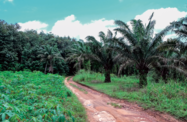Ghana’s cocoa industry has enjoyed a bumper crop this year, on the back of favourable weather conditions. During the most recent primary harvest period, from September 2010 through May 2011, the sector produced just over 900,000 tonnes of cocoa, up substantially from 623,000 tonnes the previous year. An additional 80,000 tonnes of production is expected during the three-month light crop period that began in June 2011, which should bring the annual total to just below 1m tonnes.
While good weather played a key role, the recent jump in production is also the result of ongoing initiatives put in place by the Ghana Cocoa Board (COCOBOD), the wholly owned government entity that has controlled all aspects of the cocoa industry in Ghana for nearly 80 years. Under the board’s ongoing national cocoa sector development plan, local production is expected to continue to expand in the coming years, despite a number of operational challenges.
When Ghana first came to prominence as a major cocoa producer in the 1950s and 1960s, it was largely as a result of COCOBOD-led development programmes. Today the country is the second-largest producer of cocoa in the world, with around 22% of the global market, behind Côte d’Ivoire, which boasts around 33%. Ghanaian cocoa is widely acknowledged as being higher quality than Ivorian cocoa, due to higher theobromine content and carefully managed production practices. The national cocoa sector is responsible for 11.5% of agricultural GDP and around 17% of national employment.
The cocoa industry does, however, have challenges to face. A lack of storage and transport infrastructure continues to be a major obstacle. Though COCOBOD spent months preparing for a bumper crop in 2010/11, the 903,646 tonnes of cocoa produced during the most recent main harvest period strained the country’s warehousing capabilities and resulted in congestion at ports and local trans-shipment facilities. COCOBOD is working on solutions.
In early July 2011, the board announced that it would build a new cocoa warehouse in Takoradi with storage capacity of 100,000 tonnes, which will boost the country’s total cocoa storage capacity to 700,000 tonnes. COCOBOD is expected to continue to develop Ghana’s warehousing facilities in the coming years, in an effort to keep up with steadily growing production. In the meantime, the board will rent temporary storage space to handle the overflow.
Expanding local storage infrastructure is a major component of COCOBOD’s ongoing development plan. According to a recent presentation given by Emmanuel A Opoku, the board’s deputy-director of research, the organisation is working to surpass 1m tonnes of total production by 2012/13. With the 2010/11 harvest expected to reach 980,000 tonnes, this goal will likely be met. In Opoku’s presentation, which was delivered in early May 2011 at a meeting of the executive board of the Sustainable Tree Crop Programme, a regional organisation that assists tree-crop farmers in West Africa, he outlined a number of other issues facing Ghana’s cocoa industry. These include a reliance on manual labour, the threat of diseases and pests, the use of harmful and unapproved chemicals in cocoa farming and the low literacy rate among Ghanaian cocoa farmers.
This last point, in particular, is a major issue. Ghana is home to an estimated 800,000 cocoa farmers, the majority of whom work plots of around 5-6 acres. The level of education among cocoa farmers remains quite low – many took over family farms at an early age, foregoing all or part of secondary school in order to enter the family business. As part of the ongoing development programme, COCOBOD is working to address education and other social issues among the cocoa workforce.
Other areas of focus include strengthening marketing both internally and externally, increasing payments to farmers, improving the quality and expanding the reach of Ghana’s rural road network, and increasing the use of technology in an effort to modernise the sector and improve yields.
The jump in production in 2010/11 bodes well for the future of the industry. A substantial percentage of the income from cocoa exports – the great majority of which go to European countries – is to be pumped back into the sector. With this in mind, the country could very well surpass 1m tonnes of production in 2011/12, a full year ahead of schedule. Regardless, with COCOBOD at the helm, the cocoa industry is expected to be major economic contributor in Ghana for some time to come.

